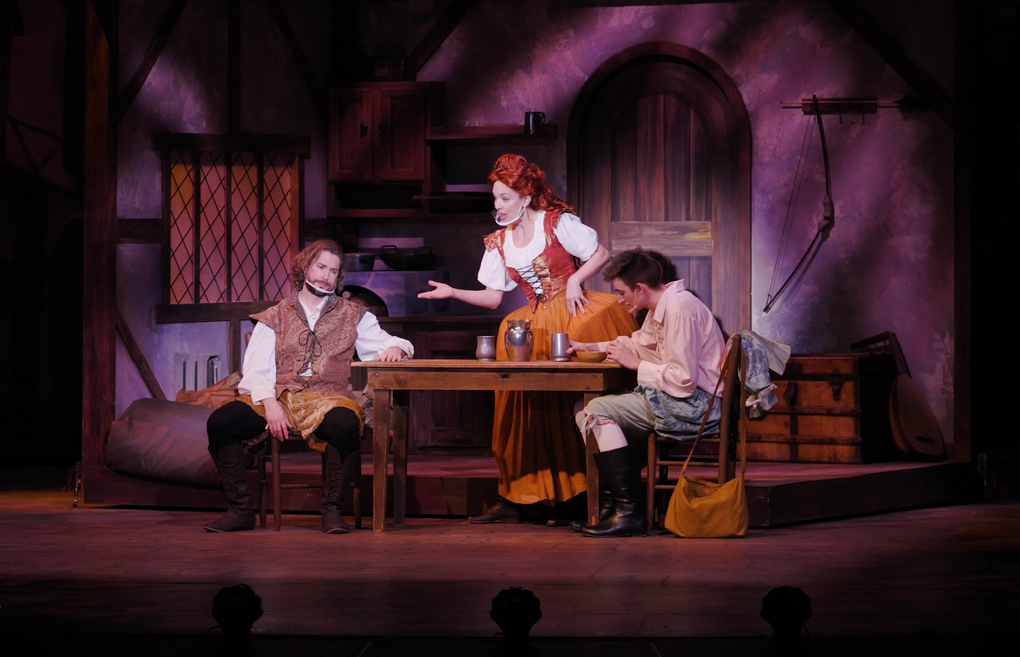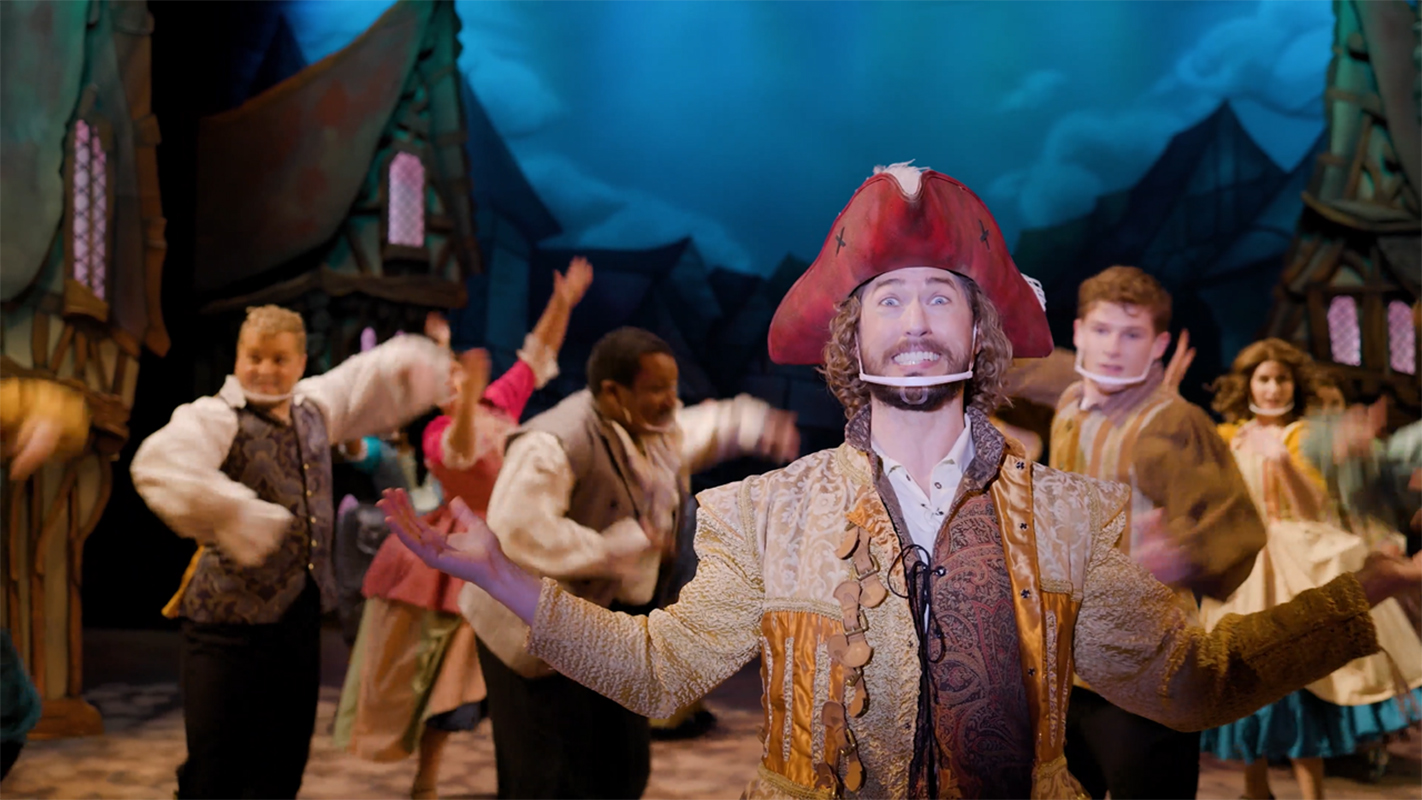On-demand offerings here to stay after success of ‘Something Rotten’
During this time of COVID-19, live theaters have gone dark, even shying away from producing virtual shows — there’s no guarantee cast and crew members could be kept safe. However, with the on-demand show “Something Rotten,” The White Theatre has proven it can be done.
Keith Wiedenkeller, director of Arts + Culture at the Jewish Community Center, said he and his staff were adamant they could do the show.
“We did a whole lot of research about how to keep people safe and we were able to do that — not a single member of our cast got sick the entire five-week preparation process or the two weeks following the show’s filming,” he said.
Everyone wore masks during rehearsal; people socially distanced when they weren’t on stage; the staging was altered somewhat; and there were fewer actors than normal in the cast.
The theater asked actors to be extra cautious in their personal lives to avoid the coronavirus, Wiedenkeller said. They all did that, he said. “That’s how committed they were to making it happen.”
They also hired a safety officer and her job was to make sure that everybody stayed 6 feet apart during rehearsals and to take temperatures. In addition, they sanitized all of the props to prevent person-to-person spread.
Wiedenkeller thinks other community theaters are looking to replicate the success of the White Theatre. He doesn’t expect professional theaters to be doing in-person performances until at least fall 2021.
“Something Rotten” is so successful, it has been extended from March 7 to March 21. Wiedenkeller said word is getting around that the video is worth watching.
“We want to make sure that everybody has a chance to watch it who wants to,” he said.
By “successful,” that doesn’t mean it has made much money. Wiedenkeller pointed out that White Theatre spent close to $40,000 on the show and right now ticket sales are at about $7,500.
If this had been a financial decision, he said they would have been better off not doing it at all. Costs include licensing fees, salaries, and paying for sets and costumes.
The White Theatre hired a videographer to shoot the show from various angles over the course of several days, then worked for a week with the videographer to edit together the finished product.
“This was not done in order to continue a money stream for us. We really did it for the same reason we exist at all at The White Theatre, and that’s to build community,” Wiedenkeller said. He said the mission today is the same as it was when the initial JCC resident theater began in 1932: to make Broadway accessible to regular people.
Auditions drew more than twice the number of actors needed. “Certainly, it said that actors in the community want to get out there and share their talents and it really gave us the impetus to move forward, to say, ‘Yeah, we’re doing the right thing.’”
Wiedenkeller said patrons of the Kansas City Repertory Theatre and Starlight Theatre have told him “Something Rotten” is better than many of the shows they’ve seen in those professional settings.
Among the “super-talented people” that make up the cast, he said, is the lead, Tom Nelson, who works at H&R Block. “He’s got this amazing voice, incredible acting talent. He just lights up the stage with a smile, his energy, and he’s just one of 21 of them.”
Wiedenkeller said the theatre expects to continue virtual offerings even after the resumption of in-person performances. The next virtual offering will be a Tik-Tok style concert featuring the music from “Fiddler on the Roof,” with the video premiering April 11.
To purchase tickets for “Something Rotten,” visit thejkc.org/rotten. For more information about upcoming virtual events at The White Theatre, visit www.thewhitetheatre.org.

Leading Actor
Nelson, who plays Nick Bottom, said the cast did get some audience feedback. For dress rehearsal and their first two performances, they had small audiences of 20, spaced out around the auditorium. For the third performance, there was no audience so the cameraman could shoot close-ups.
“As an actor, one of the biggest rewards is having an audience show appreciation — a laugh after a funny line, cheering after a big dance number, applause during the bows — and not having that on a full scale was obviously less than ideal,” said Nelson. “But knowing that audiences are still experiencing those same kinds of reactions separately in their homes is comforting and makes me excited about this production regardless of the format change.”
As unpaid volunteers, these community performers give up many hours from their personal lives, Nelson said, “because we love the joy of storytelling and we believe this is a story worth telling right now.”
Asked if he would do another virtual production, Nelson said, “One hundred percent. Being in a theater production and engaging in my favorite hobby just makes everything else in life better.”
The Director
Director Tim Bair said an empty theater was not ideal.
“The show is very funny and laughs would certainly have added the audience/performer collaboration to the mix,” he said.
But given the challenges surrounding the pandemic, he was happy they were able to put the show together and have a great time doing it.
Bair slightly altered his directing methods because some things were staged more for the camera than they would have been had the production been live. Overall, though, he directed as he normally would.
He, too, said he would do another on-demand production. “It gave a great opportunity to the performers, technicians, staff and audiences. It was nice to work on something creative again after such a dark period in live theater over the last year.”



